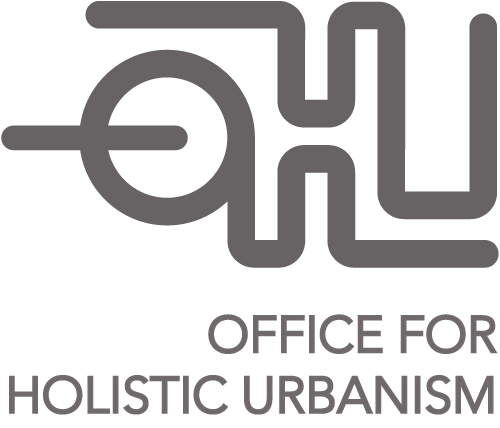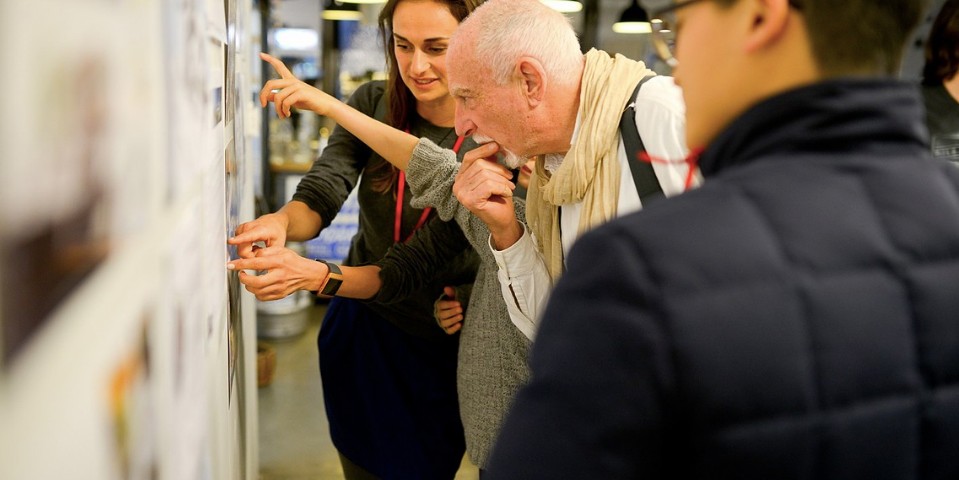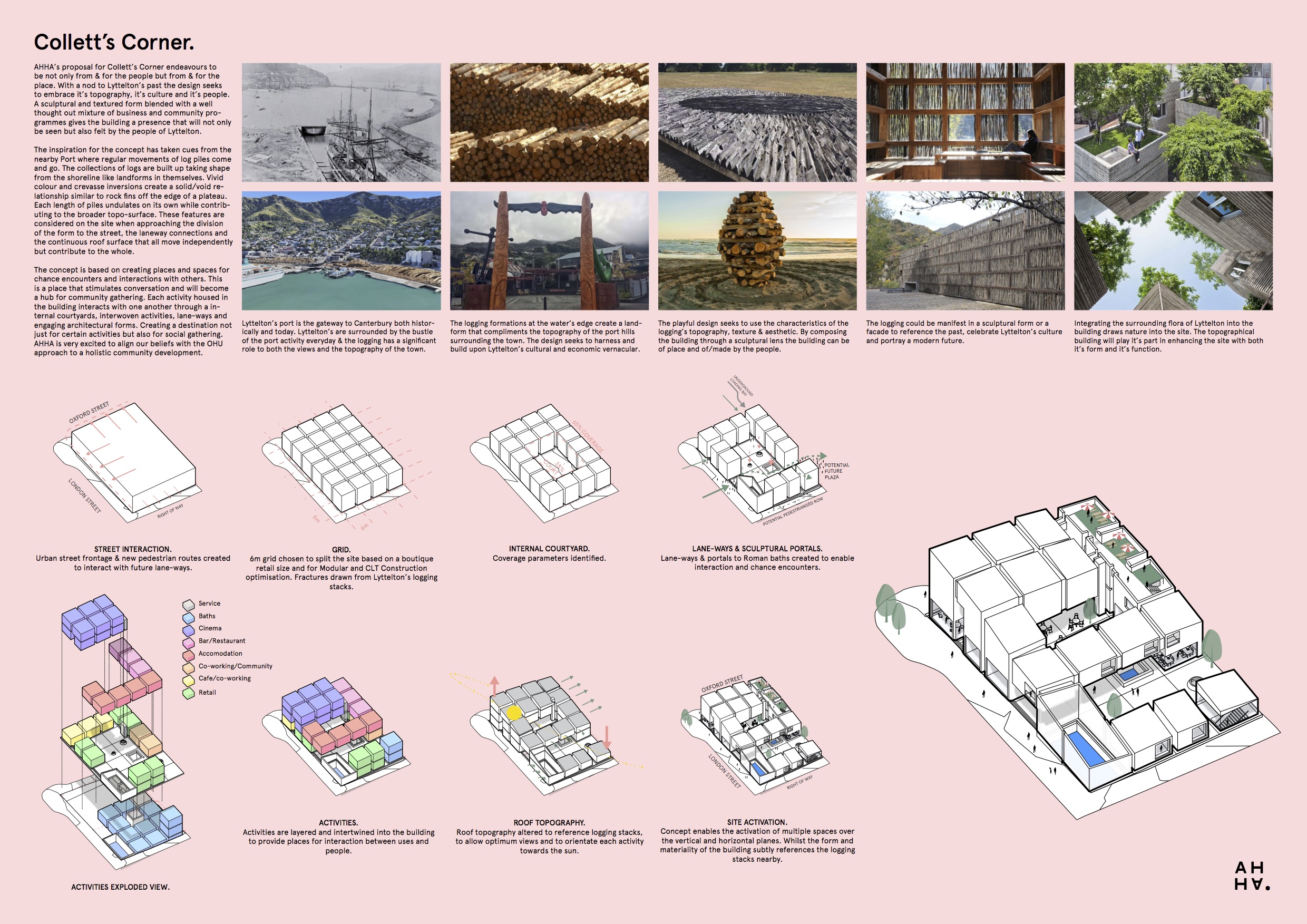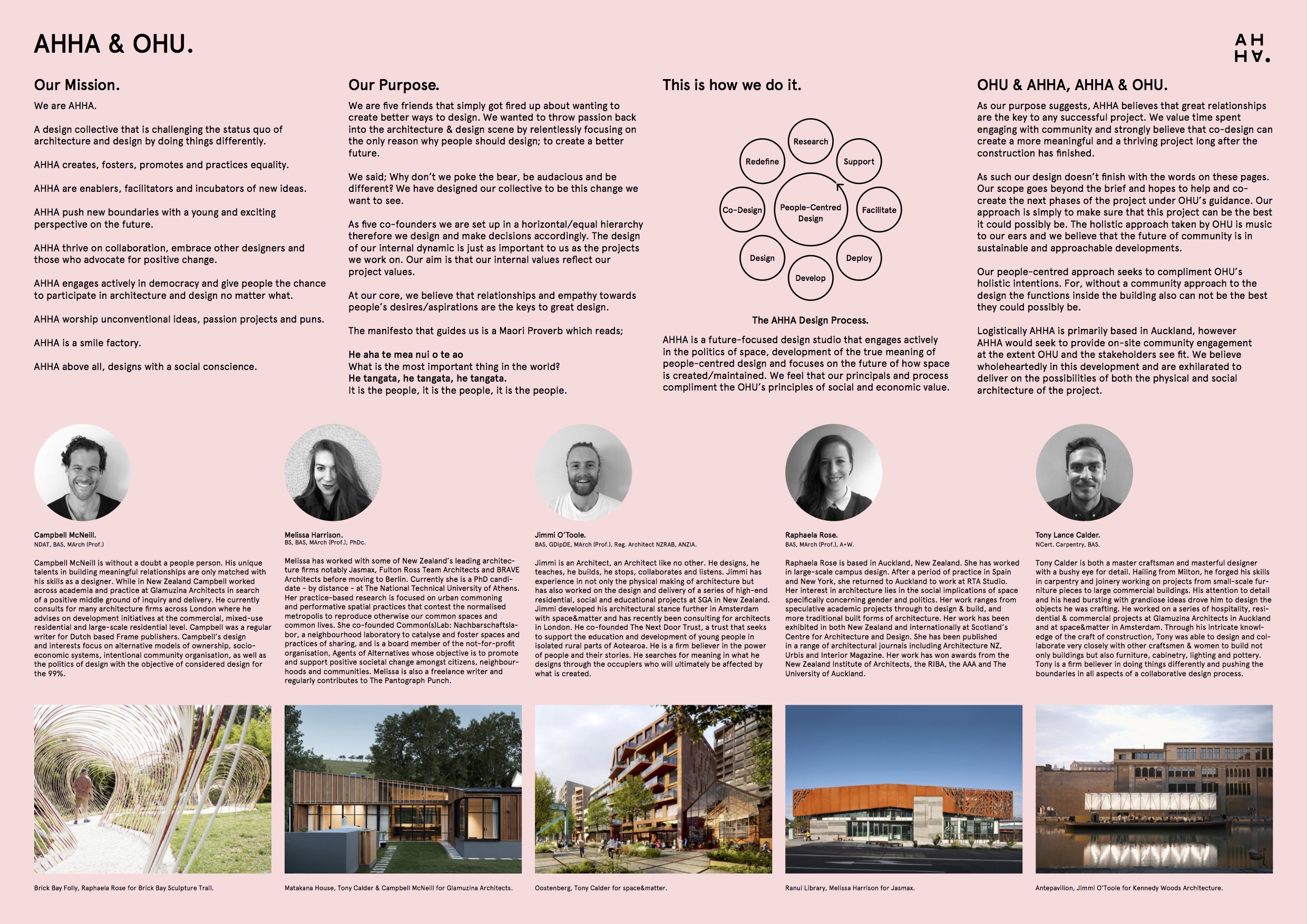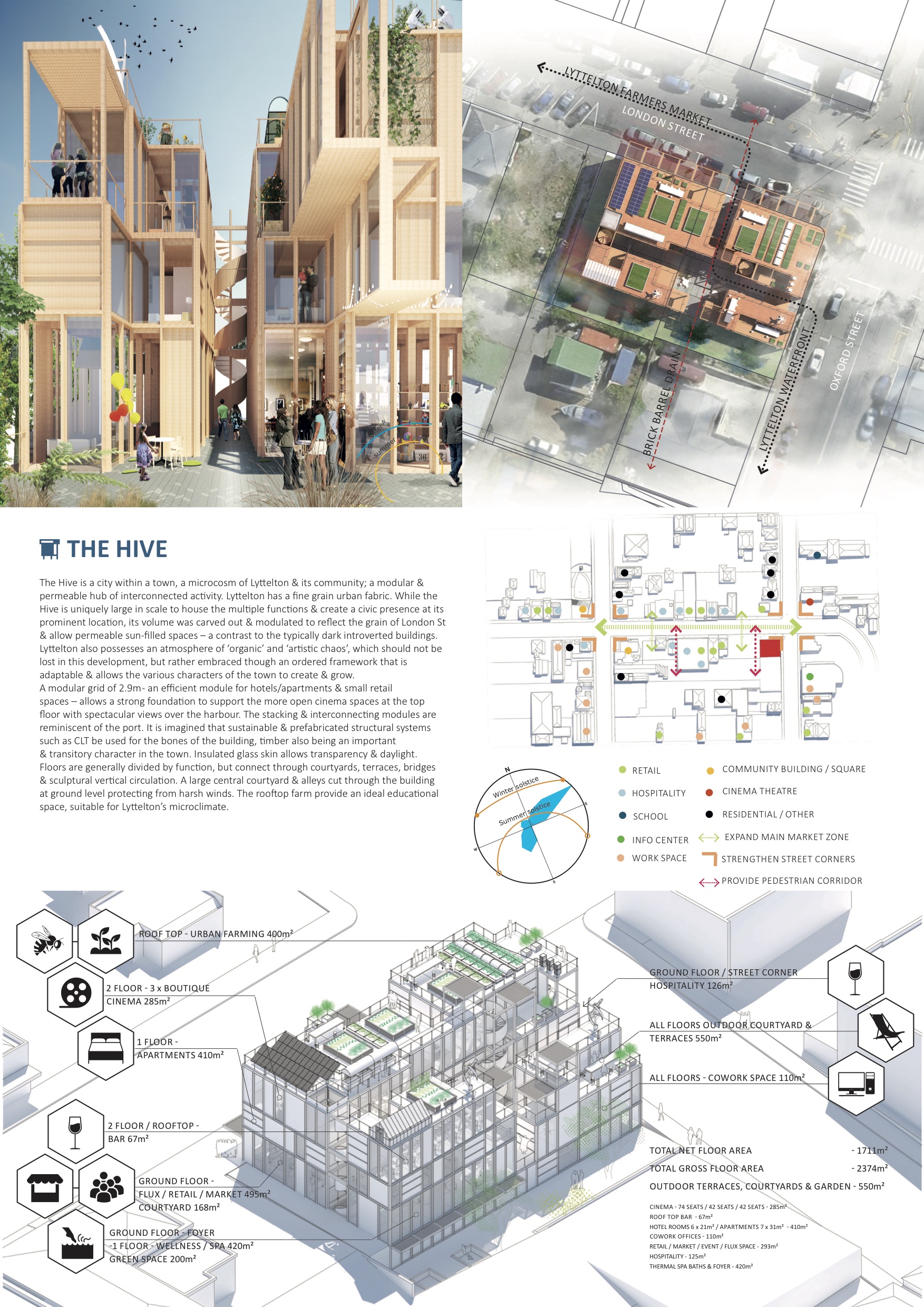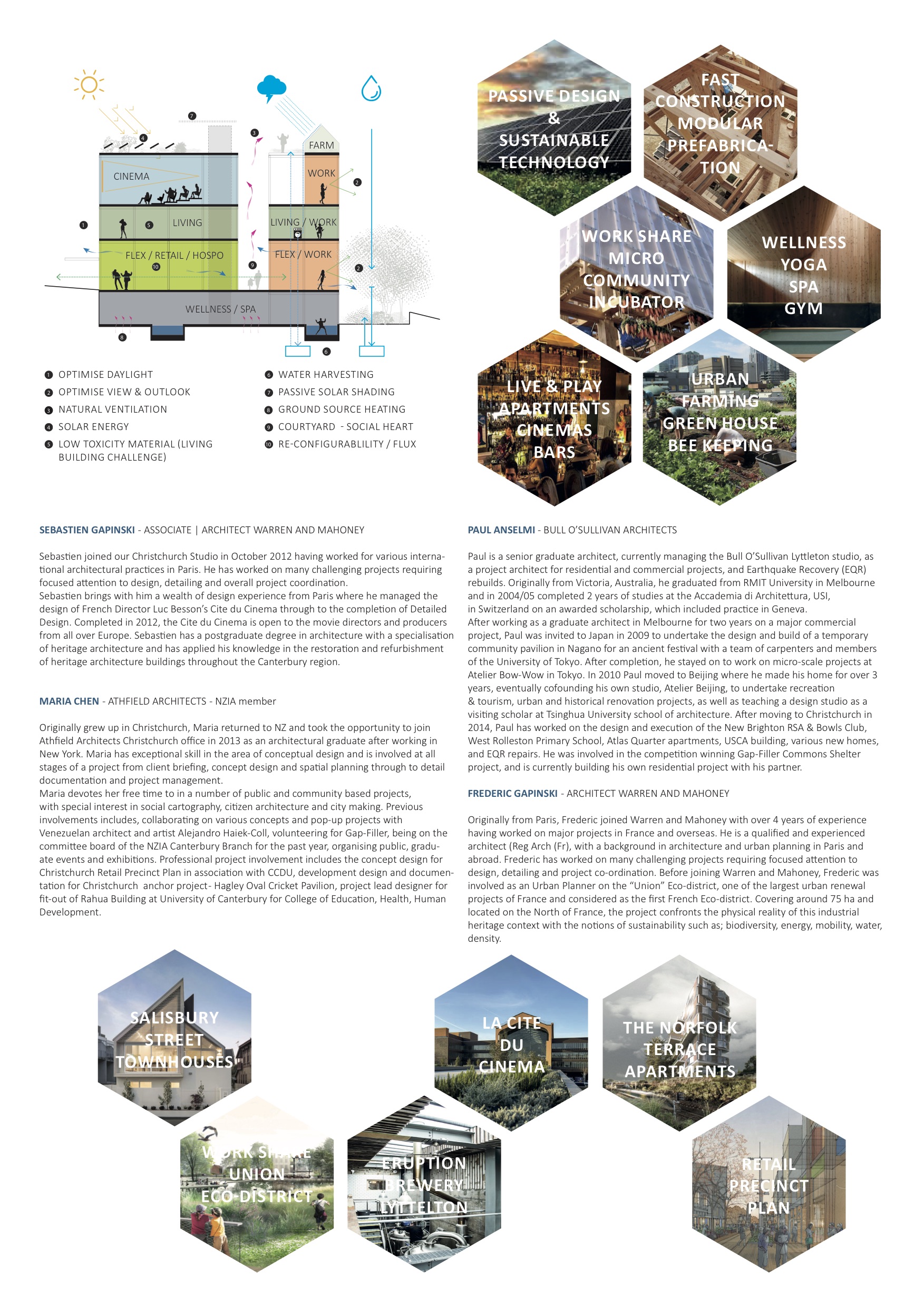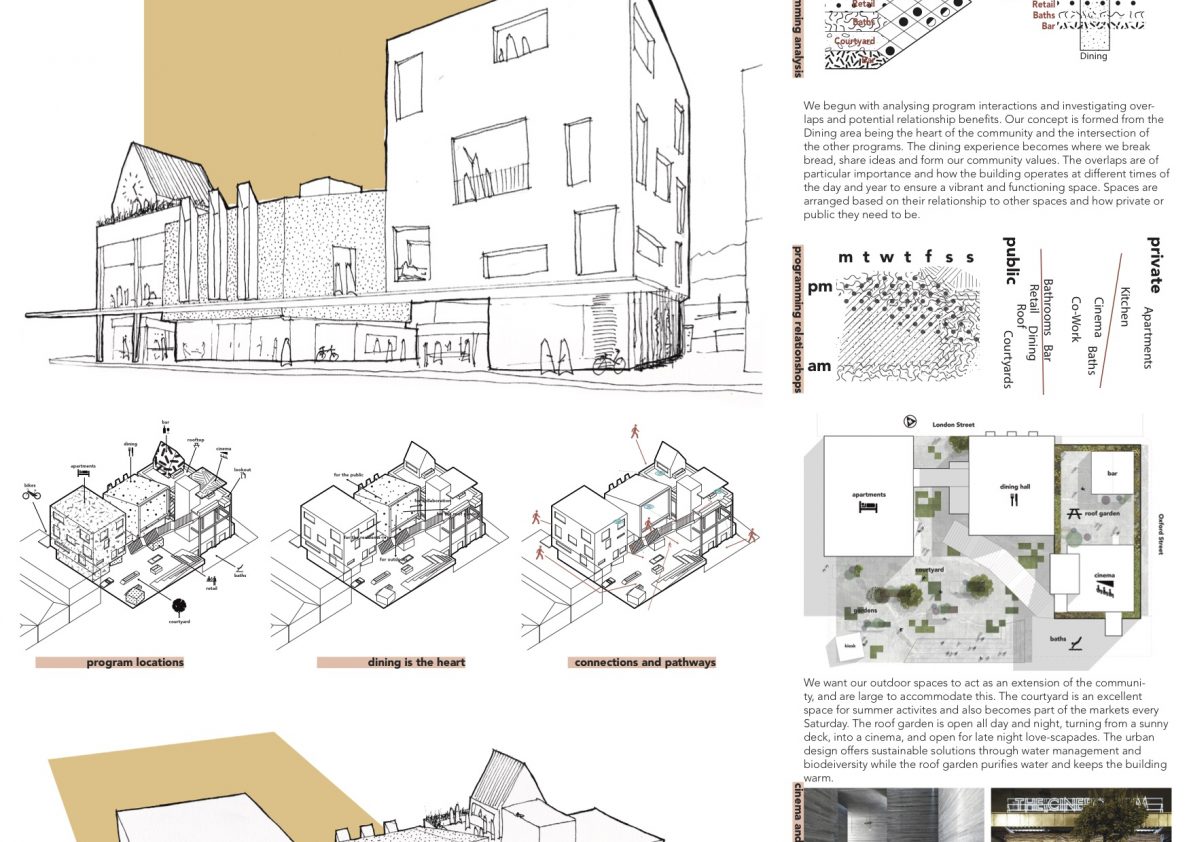Collett’s Corner Stage 1 Competition Finalists Announced

Tūmanako Pledgeme Campaign Launch
June 27, 2018
Tūmanako PledgeMe Campaign
August 5, 2018COLLETT'S CORNER STAGE 1 CONCEPT DESIGN COMPETITION
FINALISTS ANNOUNCED
Ohu is hosting a design competition, inviting architects and graduates to submit ideas for the Collett’s Corner development project. In this first stage we received 31 entries from across New Zealand, with over 90 companies participating in the competition. Many of the entries brought together multi-disciplinary teams ranging across well-respected architects, artists, engineers, and community builders. Ohu was blown away by the creative talent and time given to develop the wide range of sophisticated concepts.
The community seized the opportunity to participate. When the voting closed on July 4th at 10pm we had received a total of 2389 votes. Each person could vote for up to three entries.
The judging panel included:
- Andrew Turner - Deputy Mayor, Councillor - Banks Peninsula Ward, Christchurch City Council and former owner of the Empire Hotel which used to be on the site.
- Tony van Raat – Chair of the Auckland NZIA and former head of Unitec’s School of Architecture. Tony has a history of creating buildings with students that serve communities across New Zealand.
- Camia Young – Founding partner of Ohu and former international Architect.
- The public vote
The jury had the truly challenging job of selecting only three finalists. The quality of the entries made for a tough decision, as many of the entries not only met the brief requirements but exceeded expectations.
Each design was evaluated on the following criteria:
- CONCEPT (40%): architectural quality and guiding design principles
- PURPOSE (20%): alignment to the purpose to build community by building buildings
- FUNCTION (10%): meeting the design brief, organisation, logistics and accessibility
- EXECUTION (10%): buildability and ability to demonstrate that the design can meet consenting requirements and the construction budget
- INNOVATION (10%): technology, materiality, sustainability
- TEAM'S SKILLS (10%): capability, combined technical professional experience
Three finalists are invited to go onto stage 2. They will have 8 weeks to further develop their concepts. They will present their designs at the Lyttelton Arts Factory on September 6th. First place will receive $10,000 and the second and third place will receive $5,000.
We are delighted to announce the finalists are (in alphabetical order):
- Chance Encounters by AHHA – commended for their adaptable concept, excellent material suggestion, integrated approach and the diverse skill-set of the team.
- The Hive by in:flux – appreciated for the clarity of concept, strong relationship to the local climate, granular scale and clear laneways through the site.
- We Dine Together by Oto Group – respected for the sympathetic scale of the buildings, plentiful shared space with relationships between indoors and outdoors, and the strong concept underpinning the arrangement of the various uses.
Each of the final entries show the possibility for creating inviting places to gather which is at the core of building meaningful relationships. Ohu means “people working together,” we explore that at each stage of the development. We look forward to seeing how the finalists further develop their concepts to demonstrate how architecture creates places of belonging for the community in Stage 2 of the competition.
Collett’s Corner is Ohu’s first commercial development, a 2,300m2 mixed-use building in the heart of Lyttelton. The purpose of the development is to attract people to Lyttelton through guest accommodation, collaborative workspaces, and bespoke hospitality outlets. Through this development we are challenging conventions of property development by creating a building that builds community through its social, financial and legal design.
The Collett’s Corner building, and businesses within it, will be collectively owned, generating a distributed income to local residents. This innovative building will facilitate the connection of people, both local and visitors, through considered curation and design. The purpose is to foster building meaningful relationships through people living, working and meeting each other in this dynamic centre.
Stephanie Defregger from Handmade Photography created a slideshow of images from the exhibition event.
Chance Encounters
AHHA
The concept is based on creating places and spaces for chance encounters and interactions with others. This is a place that stimulates conversation and will become a hub for community gathering.
[showhide type = "2" more_text="Find Out More..." less_text="Show less..."]
AHHA’s proposal for Collett’s Corner endeavours to be not only from & for the people but from & for the place. With a nod to Lyttelton’s past the design seeks to embrace it’s topography, it’s culture and it’s people. A sculptural and textured form blended with a well thought out mixture of business and community programmes gives the building a presence that will not only be seen but also felt by the people of Lyttelton.
The inspiration for the concept has taken cues from the nearby Port where regular movements of log piles come and go. The collections of logs are built up taking shape from the shoreline like landforms in themselves. Vivid colour and crevasse inversions create a solid/void relationship similar to rock ends off the edge of a plateau. Each length of piles undulates on its own while contributing to the broader topo-surface. These features are considered on the site when approaching the division of the form to the street, the laneway connections and the continuous roof surface that all move independently but contribute to the whole.
Each activity housed in the building interacts with one another through internal courtyards, interwoven activities, lane-ways and engaging architectural forms. Creating a destination not just for certain activities but also for social gathering.
[/showhide]
The Hive
in:flux
The Hive is a city within a town, a microcosm of Lyttelton & its community; a modular & permeable hub of interconnected activity.
[showhide type = "12" more_text="Find Out More..." less_text="Show less..."] While the Hive is uniquely large in scale to house the multiple functions & create a civic presence at its prominent location, its volume was carved out & modulated to reflect the grain of London St & allow permeable sun-filled spaces – a contrast to the typically dark introverted buildings.
A modular grid of 2.9m- an efficient module for hotels/apartments & small retail spaces – allows a strong foundation to support the more open cinema spaces at the top floor with spectacular views over the harbour. The stacking & interconnecting modules are reminiscent of the port. It is imagined that sustainable & prefabricated structural systems such as CLT be used for the bones of the building, timber also being an important & transitory character in the town. Insulated glass skin allows transparency & daylight. Floors are generally divided by function, but connect through courtyards, terraces, bridges & sculptural vertical circulation. A large central courtyard & alleys cut through the building at ground level protecting from harsh winds. The rooftop farm provide an ideal educational space, suitable for Lyttelton’s microclimate.
[/showhide]
We Dine Together
Oto Group
We arrived at a collection of buildings embracing a generous public space which we feel reflects the character of Lyttelton.
[showhide type = "17" more_text="Find Out More..." less_text="Show less..."]
We want our outdoor spaces to act as an extension of the community, and are large to accommodate this. The courtyard is an excellent space for summer activities and also becomes part of the markets every Saturday. The roof garden is open all day and night, turning from a sunny deck, into a cinema, and open for late night love-scapades. The urban design offers sustainable solutions through water management and biodiversity while the roof garden purifies water and keeps the building warm.
From our studies and experiments, we arrived at a collection of buildings which we feel reflects the character of Lyttelton. We wanted to add to the vibe of the area, not create a solid block. We want the hotel dwellers to feel a part of the community, with views down to the courtyard and London Street as well as connected to the Dining room via a bridge. The Co-work space is also linked to the Dining room for more informal collaborations and meetings, and has a generous plan for maker space, tables and other facilities. It would be designed to foster connections and provide inspiration for others.
[/showhide]
06 July 2018
